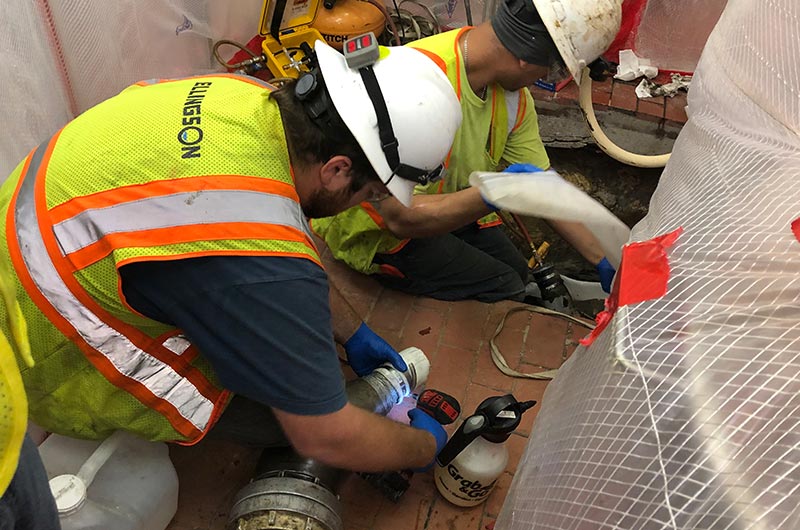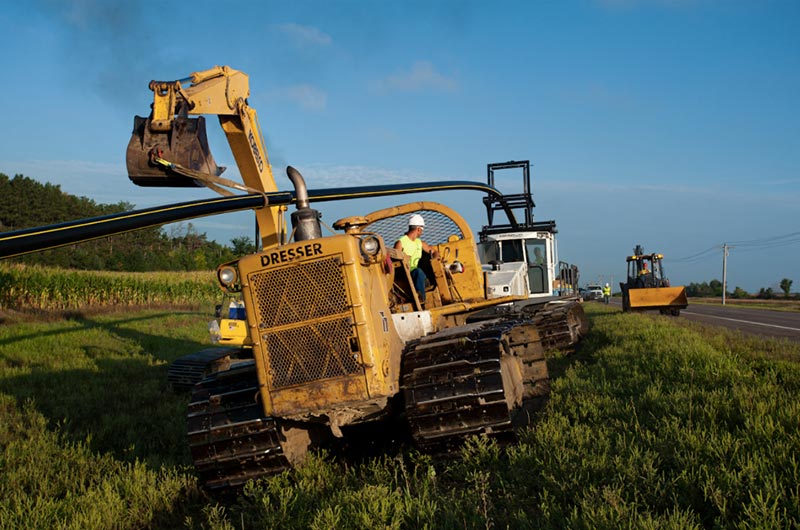A Proven Solution for Repairing Pipes Without Disruption
Cured in Place Pipe (CIPP) rehabilitation is a widely used, trenchless method for repairing and rehabilitating cracked, broken, or root-infiltrated pipes without excavation. CIPP is relied upon by homeowners, businesses, municipalities, and industrial facilities to repair existing pipelines with CIPP, facilities can rehabilitate their plumbing infrastructure and avoid the significant disruptions caused by trenching replacement.
CIPP rehabilitation involves inserting a resin-saturated into the existing pipe and then curing it using UV light. The cured material bonds tightly to the inner walls of the existing pipe, creating a pipe within a pipe. This rehabilitated pipe restores the integrity and water flow of the original pipeline. Studies have found CIPP to have a service life of 50-100 years when properly installed.
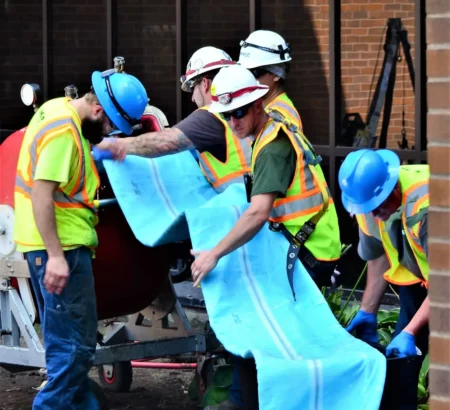
A study published in the MDPI Journal found that CIPP pipe rehabilitation has a median service life of 70-80 years based on current installations. The study analyzed inspection reports from 25 water utilities that have used CIPP to rehabilitate over 500 miles of water pipes. After 10-15 years of service, the CIPP pipes showed no significant failures or degradation.
According to research by the National Service Center for Environmental Publications (NSCEP) CIPP rehabilitation has saved over $25 billion in replacement costs for North American water and sewer utilities. CIPP extends the service life of pipes at a fraction of the replacement cost.
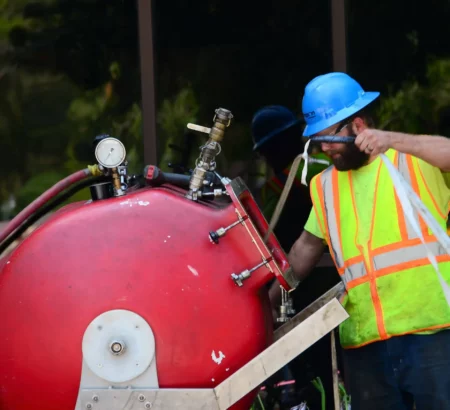
The Benefits of CIPP Rehabilitation
There are many benefits to CIPP pipe rehabilitation compared with open-cut replacement:
Limited or No Excavation Required
CIPP rehabilitation requires only small access pits to insert the resin tube, avoiding the major excavation required for pipe replacement. This limits disturbance to the surrounding area and reduces restoration costs. According to studies, CIPP rehabilitation requires excavating only about 5-10% of the area required for open-cut replacement.
The limited excavation also avoids difficulties associated with congested underground utilities in urban areas. CIPP can be used to rehabilitate pipes even where multiple utility lines are close.
Utilize Existing Infrastructure
Rather than removing and replacing the existing pipe, CIPP rehabilitation uses the original pipe as a structural host for the new pipe lining. This avoids purchasing new pipe materials and the costs associated with removing and disposing of the old pipe. Studies show material costs for CIPP are 50-70% less than replacement.
Reduced Shutdown Time
Because no significant excavation is required, CIPP rehabilitation can be completed with limited water or sewer service interruption. CIPP requires shutting off service for compared with weeks or months for open-cut replacement. This reduced shutdown time is essential for businesses, hospitals, and other facilities where service interruption needs to be minimized.
A study from the Plastics Pipe Institute found that CIPP rehabilitation of an 8-inch sewer main under a roadway was completed in 10 hours overnight, allowing the road to open as usual the next day. Replacement would have required closing the road for 3-4 weeks.
Increased Flow Efficiency
The smooth interior of the CIPP pipe lining improves flow efficiency over corroded or damaged pipes. CIPP rehabilitation can increase the pipe flow volume by up to 30% due to reduced friction and improved hydraulic characteristics.
Increased flow efficiency is essential for sewer and stormwater systems where maximum flow capacity is required, especially during peak rain events. The improved flow can delay or eliminate the need for pipe upsizing, saving significant costs.
Stops Root Intrusion and Infiltration
The CIPP lining forms an impenetrable barrier that stops root intrusion and prevents groundwater infiltration into sewer pipes or sewage exfiltration into the surrounding soil. This protects both the pipe itself as well as the surrounding environment.
Studies have found CIPP lining to effectively eliminate up to 100% of infiltration and root intrusion. This provides both structural and environmental benefits by protecting the pipe from damage while also preventing the loss or contamination of groundwater or soil.
Cost-Effective Solution
While the upfront costs of CIPP rehabilitation and open-cut replacement can be comparable, studies show that factoring in expenses like excavation, restoration, and service disruption, CIPP can be 20-40% more cost-effective.
The longer service life of CIPP also means lower life cycle costs over time. According to water and sewer pipe rehabilitation studies, CIPP has the lowest life cycle cost of any repair method. It provides the benefits of a newly installed pipe at a significantly lower cost than replacement.
An American Water Works Association study compared life cycle costs for 11 different pipe repair and replacement methods, including CIPP. They found CIPP lining to have the lowest net present value cost, saving up to 25-50% compared with pipe replacement over a 75-year service period.
The CIPP Rehabilitation Process
The CIPP rehabilitation process consists of the following main steps:
- Cleaning and Inspection: The pipe’s interior is inspected to determine the condition and size. This inspection identifies any necessary repairs to prepare the pipe for lining. CCTV cameras are commonly used to inspect the pipe and locate any faults or damage.
- Resin Tube Fabrication: A resin-saturated tube is custom fabricated to fit the dimensions of the pipe. The tube is made flexible to navigate bends and joints in the pipe. The material and thickness are designed based on the pipe conditions and required structural integrity. Polyester felt tubes with vinyl ester or epoxy resin are commonly used.
- Installation: The resin tube is inserted into the pipe through access pits, pulled into place, or inverted using pressurized air. The tube is then expanded against the walls of the pipe. Rollers, winches, and rope carefully pull the tube through the pipe to avoid tearing or creasing it. Once in position, the tube is inflated with air to press it firmly against the inner pipe wall.
- Curing: In CIPP pipe rehabilitation, the curing process plays a vital role as it transforms the resin tube into a solid and resilient pipe lining. This process can be achieved through different methods, including the traditional approach involving hot water or steam and the innovative UV light installation method.
- Traditional Curing Method: The traditional method of curing relies on exposing the resin-saturated tube to hot water or steam. This heat application triggers a chemical reaction within the resin, causing it to polymerize and harden. The result is a durable and secure lining that tightly adheres to the inner walls of the existing pipe. Over the years, this tried-and-true method has consistently proven its effectiveness in CIPP pipe rehabilitation by ensuring proper curing and maintaining the structural integrity of the new pipe lining.
- UV Light Curing Method: For a more cutting-edge approach, the UV light installation method offers an exciting alternative. This innovative technique utilizes specialized UV light equipment to cure the resin within the CIPP liner. Once the resin-saturated tube is properly positioned within the pipe, the magic happens as UV light is applied. This triggers a rapid chemical reaction, causing the resin to solidify swiftly. The result is a solid pipe lining with exceptional strength and powerful adhesion properties. One of the greatest advantages of the UV light curing method is its ability to expedite the process, leading to shorter project durations. This translates to less disruption to the surrounding environment and faster completion of the rehabilitation project.
Traditional and UV light curing methods have unique benefits and are widely employed in CIPP pipe rehabilitation projects. The choice between the plans depends on various factors, such as specific project requirements, pipe conditions, and time constraints. With their extensive experience, skilled CIPP contractors like Ellingson are well-equipped to evaluate these factors and recommend the most suitable curing method. Their goal is to ensure the rehabilitated pipes perform exceptionally well in the long term, providing clients with a reliable and efficient pipe lining solution.
The curing process in CIPP pipe rehabilitation is a crucial step. It turns the resin tube into a strong and durable pipe lining. Whether through the traditional method involving hot water or steam, or the more advanced UV light installation method, both approaches have proven their effectiveness repeatedly. By partnering with experienced CIPP contractors, clients can benefit from their expertise in selecting the optimal curing method for their project requirements. This guarantees the pipes are restored to their full potential, delivering reliable and long-lasting performance.
- Property Reinstatement: Once cured and cooled, the access pits are filled in, and the property is restored to its original condition. The pipe is now rehabilitated and ready to resume service.
- Testing: The newly installed pipe liner is pressure tested to verify its strength and water tightness before returning the system to service. Standard tests include deflection and air testing to confirm the CIPP meets the required structural standards.
- Follow-Up Inspection: A final CCTV inspection may be performed to check on the condition of the installed CIPP liner before completing the project. The inspection ensures no defects, damages, or tears in the new liner before service is restored.
Why Choose Ellingson Infrastructure Management for CIPP Pipe Rehabilitation?
Ellingson is a fully certified, licensed, and insured trenchless contractor for CIPP lining systems. Our expertise in CIPP technology allows us to rehabilitate deteriorating pipe infrastructure for municipal, commercial, and industrial clients.
CIPP pipe rehabilitation is always custom designed based on the specific conditions of your pipe.
We will evaluate your needs and recommend a system to match your requirements. We use industry leading CIPP lining systems backed by manufacturer warranties, ensuring high-quality and long-lasting results.
We monitor the latest advancements in CIPP technology and materials to provide clients with innovative, sustainable solutions for pipe rehabilitation. Our certified technicians have years of experience rehabilitating pipes across diverse applications, from sewers and water mains to chemical conduits and HVAC piping.
CIPP lining from Ellingson is the proven solution for pipe rehabilitation without the disruption of open-cut replacement. Contact us to schedule an onsite evaluation and estimate for your CIPP pipe rehabilitation project. Our experts will assess your piping issues and recommend a customized CIPP solution to extend the service life of your pipes for generations to come.
PIPE INSPECTIONS & ASSESSMENTS
Industry Associations
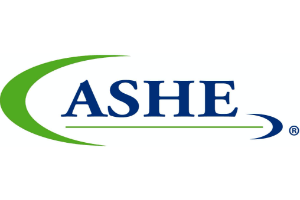
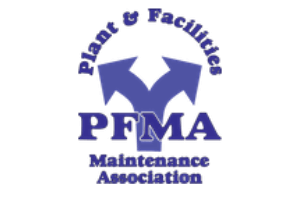
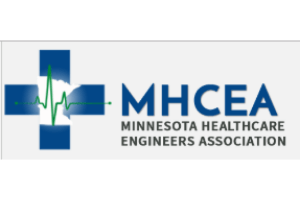

Past Projects
Click and view some of our recent projects.
Contact us to learn more
Have a question? Need an estimate or more detail on our services?
Or just want a call-back? Let’s get in touch.
